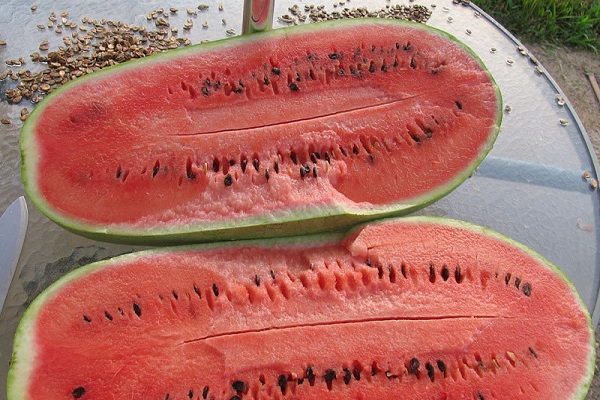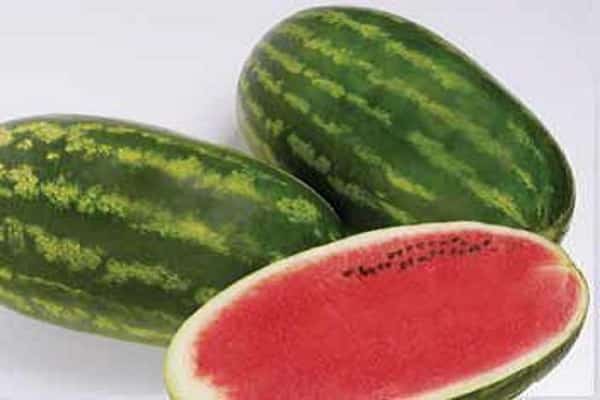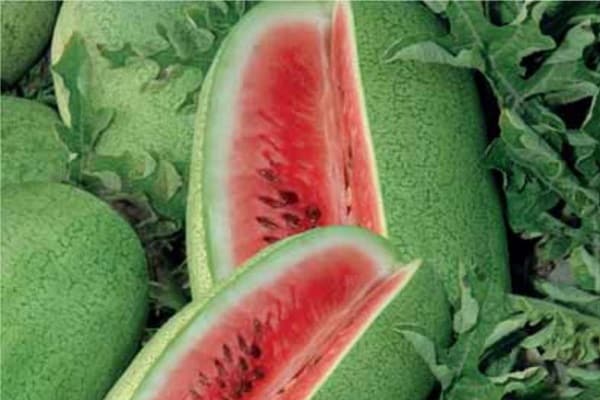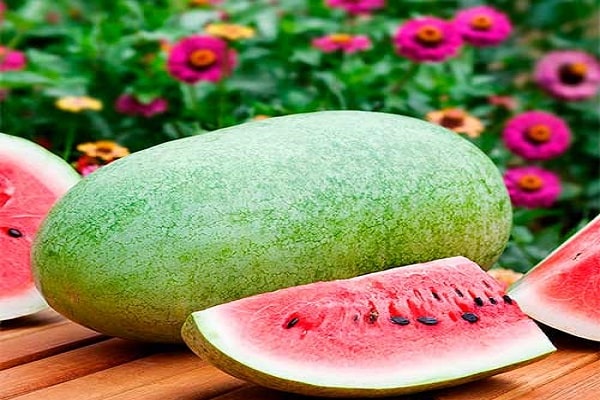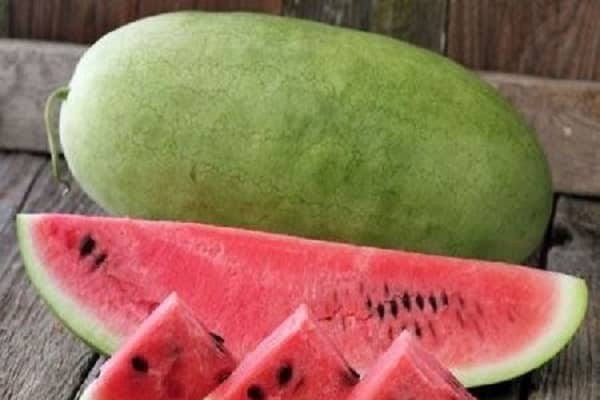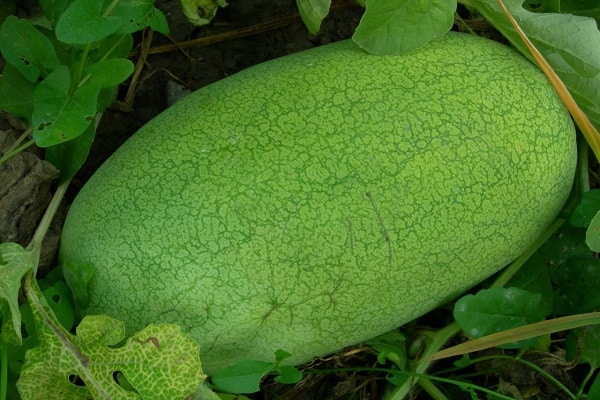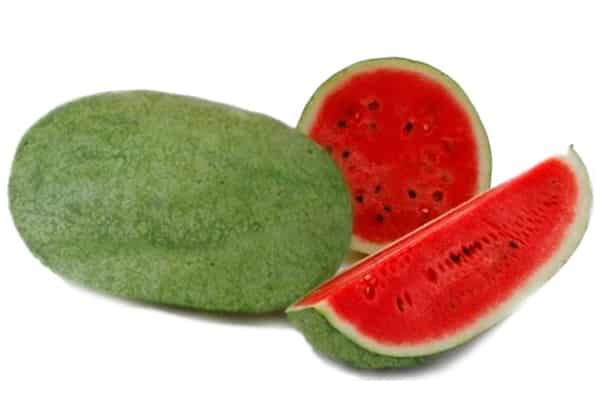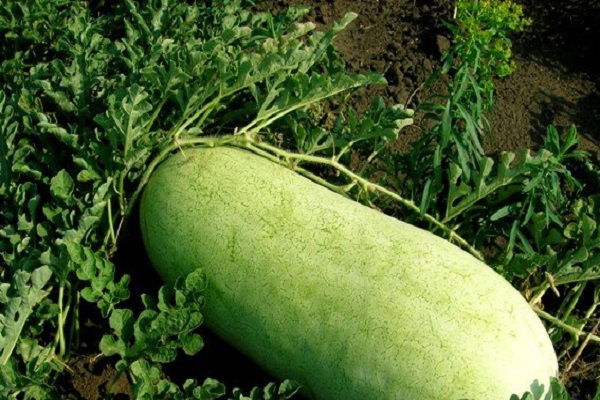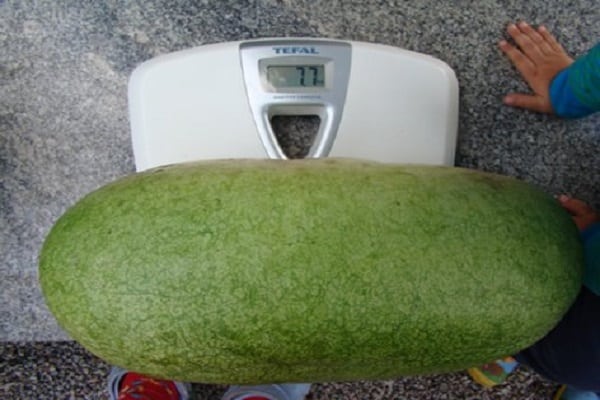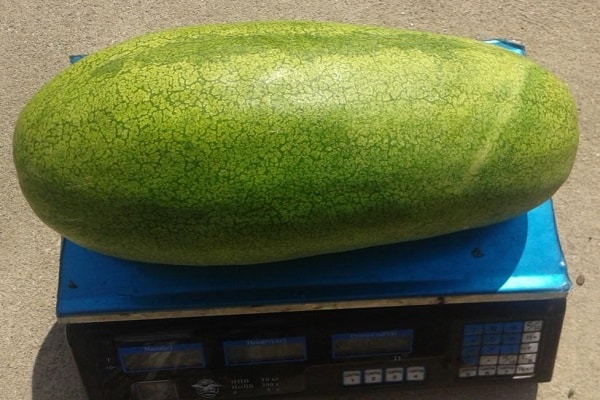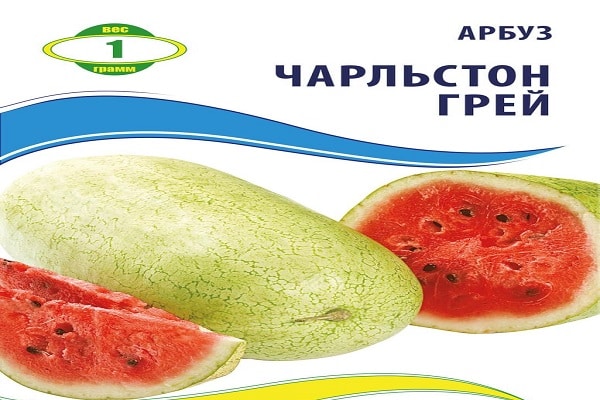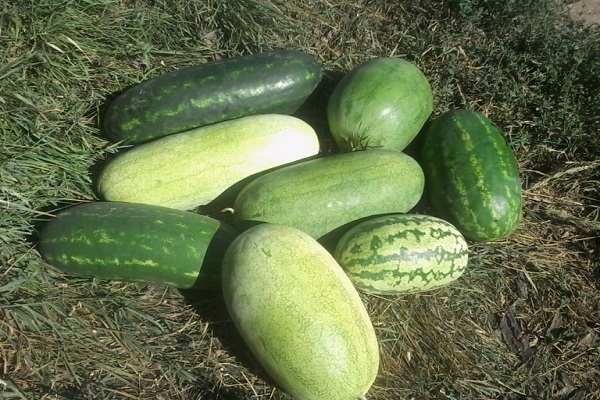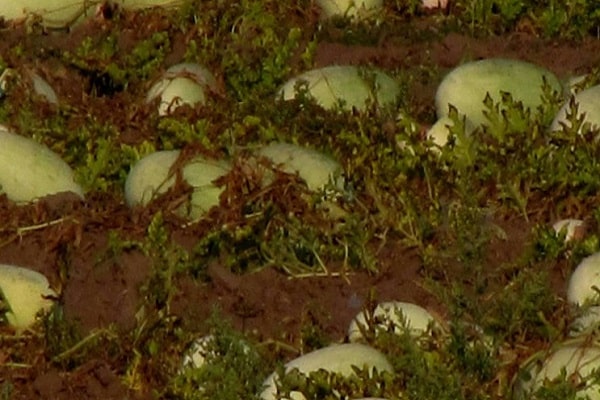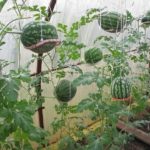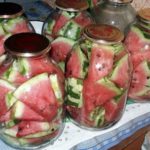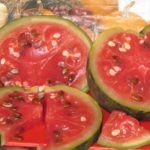Sweet fruits that quench thirst in the summer heat are sold along highways, in kiosks, in markets, from cars or simply from the ground. To speed up maturation and increase weight, they are fed with nitrates. Instead of a delicious watermelon, you can buy a rotten, watery fruit. Owners of dachas and small plots of land are trying to independently grow berries that love the sun and heat. Until recently, only residents of the Stavropol Territory, Krasnodar Territory, and Astrakhan Region could boast of a melon crop harvest. With the advent of the Charleston Gray watermelon, planting of the heat-loving crop spread to the middle zone.
- History of selection, and in which areas it can grow
- Watermelon Charleston Gray. Description and characteristics
- Necessary conditions for a good harvest
- Watering
- The soil
- Fertilizer
- Watermelon growing technology
- In greenhouse conditions
- Outdoors
- Prevention and control of pests and diseases
- Harvest and storage
History of selection, and in which areas it can grow
Although melon seeds germinate well in greenhouses and greenhouses, only when grown in open beds and fields illuminated by the direct rays of the scorching sun, watermelons delight with sweet pulp that melts in the mouth. Breeders from many countries have been developing hybrid varieties that are better adapted to different climate conditions, tolerate cold and rainy weather, and have a short growing season. Charleston Gray appeared on the market thanks to the hard work of specialists from France. Hybrid seeds are sold under the brand name HM Clause.
This watermelon is planted in Siberia, the Volga-Vyatka region. Its fruits ripen in Altai, in the Central Black Earth regions, and are well suited for this variety PMoscow climate.
Watermelon Charleston Gray. Description and characteristics
The hybrid, bred by French breeders, quickly gained popularity among summer residents. Farmers successfully grow sweet fruits for sale.
Charleston Gray is different:
- long whip:
- a large number of side shoots;
- elongated fruit shape.
The powerful plant has carved leaves, the berry has a light and smooth skin, the thickness of the rind exceeds 2 centimeters. The variety attracts with its bright pink juicy pulp; some watermelons weigh 12-15 kilograms. When grown in the middle zone and Siberia, the weight of the fruit is slightly less. They can be transported over long distances without any problems and retain their flavor for a month and a half after harvest.
The variety is not affected:
- fusarium wilt;
- anthracnose;
- mosaic disease.
The first hybrid watermelons ripen 75 days after germination. In the south, farmers harvest up to 100 tons of fruit per hectare.
In the middle zone and in Siberia, Charleston Gray is recommended to be grown in seedlings. Dark brown seeds are sown in a greenhouse or peat pots.
Necessary conditions for a good harvest
Although hybrid varieties tolerate weather changes normally, in order for the fruits to set and ripen, they need an abundance of light, timely fertilizing, and a certain humidity.
Watering
Many gardeners, planting watermelons in the middle zone, believe that melons love a dry climate and heat, and therefore do not need water. Plants actually develop at an air temperature of at least 22°, but without watering small and tasteless fruits are formed. Although hybrids and varietal crops have powerful roots that go deep into the ground, they need moisture for almost the entire growing season.
After emergence of seedlings before the growth of lashes water the watermelons preferably every day with warm water. When they fade, it is enough to moisten the soil once a week at the rate of 8 liters per bush, then the ground will get wet by half a meter.
Farmers are not able to irrigate large areas sown with melons so often, so they begin to water abundantly:
- after thinning the seedlings;
- on flowering days;
- before the start of ripening.
To retain moisture in the ground longer, the rows are mulched with hay or straw. When the watermelons begin to ripen, irrigation is stopped, otherwise the fruits will not be sweet, but watery. Like many other plants, melons and melons need to be watered at the root and in the evening, when evaporation decreases.
If possible, it is better to install a drip irrigation system.
The soil
In order for watermelons to ripen in the middle zone, you need to choose only early ripening varieties.These include the hybrid Charleston Gray. The culture prefers light sandy soils and a lot of space. If the land on the site is infertile, in order to improve the composition, it is mixed:
- with peat;
- sawdust;
- mullein
In the spring, in each hole prepared for planting a watermelon, pour a spoonful of superphosphate and 60 grams of nitrophoska, cover with soil and moisten with water. After each watering, the soil must be loosened, otherwise a crust will form that does not allow air to reach the roots, preventing the growth of vines.
Fertilizer
Hybrid Charleston Gray types are less susceptible to disease, but require large amounts of nutrients. To harvest large and sweet watermelons, you need to fertilize the plants three times with both organic matter and mineral fertilizers. The melon crop reacts positively to humus and rotted manure, and mullein diluted in water in a ratio of 1 to 5. With this feeding, nitrates do not accumulate in the fruits.
The nutrients necessary for watermelons are present in herbal infusions of alfalfa, nettle, and plantain. You can alternate them with manure or mix them with wood ash.
When fertilizing with potassium fertilizers:
- Many female flowers appear.
- The ovary forms faster.
- The taste of the fruit improves, sugar and vitamins accumulate.
During the growing season, plants need magnesium and calcium; for the growth of stems and leaves, from the 10th week, fertilizers containing nitrogen are applied.
Watermelon growing technology
Planting and caring for the Charleston Gray hybrid is practically no different from the techniques used for other varieties of this type of melon.Sweet and juicy berries ripen when grown in fields and spacious areas, but where the climate does not allow the fruits to ripen, the crop is planted in closed ground.
In greenhouse conditions
When growing watermelons under film, you must follow the basic rules. In April, they prepare the place, dig up the ground, adding sand to it, make a deep trench, put manure at the bottom, and pour soil on top. When 3 leaves appear on the seedlings, the bushes are moved to the greenhouse every 60 centimeters. The wells are moistened with warm water.
To prevent the sprouts from starting to rot, they do not need to be buried in the ground. Watermelons are planted after May 20, and the film is pulled tightly. The melon crop is constantly watered at the rate of 0.5 liters of water per bush. Nitrogen fertilizers are used as the first fertilizing. When the watermelons begin to develop, the lashes are tied up. During the flowering period, the greenhouse is ventilated so that the bees do pollination.
Outdoors
Charleston Gray can be planted in fields and summer cottages in the middle zone, therefore, when choosing seeds, many choose this hybrid. The technology for growing such varieties of watermelons involves both the seedling method and sowing directly into open ground.
The first method is suitable for regions where summer is not very warm and ends quickly. Peat pots are filled with ash, soil and humus and the seeds are sent. The seedlings are fed and watered, and at the age of 30 days they are moved to the garden bed.
The second method of growing watermelons is less labor-intensive. When the soil temperature reaches 14 degrees, holes are made in it, peat, humus and ash are placed in them, and 4-5 seeds are placed in each hole. The emerging sprouts are thinned out, leaving one stem.
Prevention and control of pests and diseases
Charleston Gray is resistant to major cucurbit problems but suffers from aphids. The female of this small insect lays eggs on watermelon leaves, and they curl and quickly dry out. The best prevention of the invasion of such pests is weeding and watering with a solution of onion peels. Spider mites love melons. To cope with it, watermelon leaves are treated with an infusion made from dope.
If folk remedies are powerless in the fight against parasites, they resort to spraying plants with insecticides.
Harvest and storage
Watermelons are cut 4-5 days before the fruits are fully ripened. It is not recommended to pick juicy berries ahead of time, since they will not ripen. Melons harvested late are not stored for long. Charleston Gray has a thick crust, transports well, but does not last until winter.
To prevent watermelons from rotting and losing their taste, they are left in a ventilated room with a temperature of up to 4 ° C..
The fruits are placed in boxes, sprinkled with ash or dry moss. You can wrap the berries in thick fabric and hang them in a net in the cellar.

